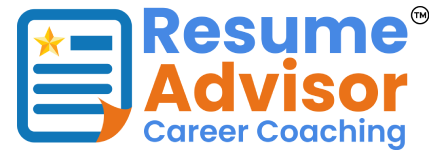Professional Resume Writing
Knowing how to write a professional resume is crucial in today’s job market. Do you know the average time a recruiter takes to evaluate a resume? 10 seconds. That means you have 10 seconds to make an impression that will lead to an opportunity to interview for your next job. Resume writing can seem quite simple at first, but without proper guidance, it is easy to make mistakes that will reduce your chances of success. Presentation displays your ability to consolidate work, and be clear and concise. If your formatting and fonts are inconsistent, it shows you can’t handle an assignment. The following are five points to focus on when you build your resume and write a cover letter.
1. The header.
One would think of this as the simplest task, right? Well, you’d be surprised. Often times, people use unprofessional emails, names, and acronyms that show they are amateur. Your email should be your name, without any icons, words, or weird numbers. For example; JohnSmith@gmail.com or Jsmith@gmail.com are simple and effective. However, people sometimes use email addresses that are not even theirs, such as their family members or friends. This is a huge red flag. Avoid using email addresses such as Lakerlover23 or SpecialChef, etc. List your primary phone number, and your mailing address, and that’s it! This is the first step in building your professional resume.
2. The summary.
The goal is for the reader to interpret narrative of who you are. This is where your summary/objective portion is key. You want to essentially give yourself a label. You’ll need to describe your industry, main skills, and years of experience within one to two sentences. A winning resume will clearly convey the relevant title of an applicant (i.e. “financial business analyst,” “or media graphic designer.”
3. Education.
People often list their education at the top of the page, while others place it at the bottom. Unless you are a recent graduate (within 2 years), or went to a top tier school, you should always put education at the bottom. Otherwise it indicates that you are trying to compensate for empty work experience. Within this section, you should list the name of the institution, year of graduation, type of degree and degree name, and relevant coursework. Try to keep the coursework as specific and niche as possible. For example, if you took economic statistics, or interactive computer science, you’ll definitely want to list it. If you are a recent graduate, you should list your GPA as well. Lastly, if you have any notable achievements or awards, go ahead and list them.
4. Work experience.
This is the most crucial part of your professional resume. Your goal is to keep the document concise, within 1 page. For those deeper into their career, it is acceptable to have 2 page. Here’s the catch; employers don’t want to hire people who have jumped around jobs. They want candidates who are ready to commit long term, and showing multiple jobs with under a year of time in each is a red flag. However, Internships / contracted jobs are an exception to this rule. Furthermore, another key point is consistency. For each job, you should have at least 2 bullet points, but no more than 6, and try to keep all jobs equal or similar in terms of the amount of bullet points. The key is to describe a task, action, and result in each bullet. If you spend too much space describing things you did, it won’t show that you are an achiever. Being a doer is great, but results are what show make you the real deal. Make sure to indicate key achievements, numbers, percentages, etc.
5. Skills and Qualifications.
In this section, you’ll want to list in 3 – 5 lines, the main skills and qualifications that describe your background. This includes personal and technical skills, languages, core competencies, and even licenses and certifications. Therefore, the trick is to fill this section with keywords relative to the job you are applying to; you’ll want to scan the job descriptions and insert keywords that you qualify for. This brings us to our last point for your professional resume.
Bonus tip:
Tailoring. Lastly, submitting a professional resume or cover letter isn’t supposed to be a universal process. In other words, you can’t use the exact same document for every application. It is important that you change the keywords to match the job description, in alignment to your qualifications. This is especially necessary for companies that use algorithms and software to scan applications. Practice these guidelines and incorporate them into your resume, and you’ll be on your way to interviews in no time! Contact us today to learn more.

